
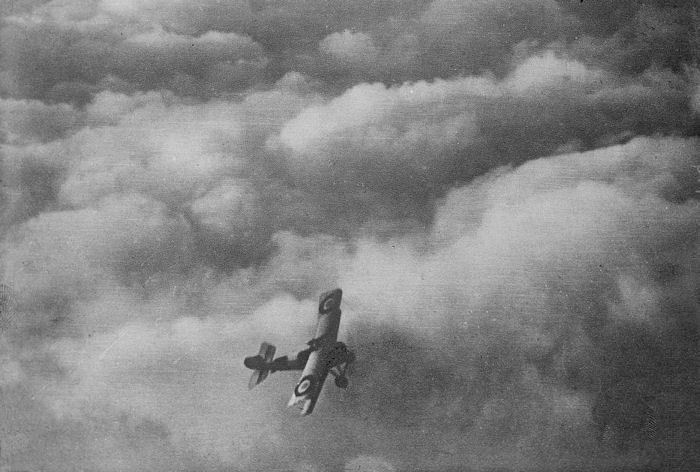
French Fighter Ace Jean Navarre looming amid the clouds, ready to pounce. He spent ten hours a day in the air, making five two-hour flights, climbing each time to 12,000 feet then slowly descending, all the while hunting Germans. He adopted a rigorous athletic-style training routine, including no alcohol or tobacco, to keep his body in peak fitness. Below: A last minute briefing for a British fighter crew before takeoff. The machine-gun mount in the rear could rotate in any direction. |
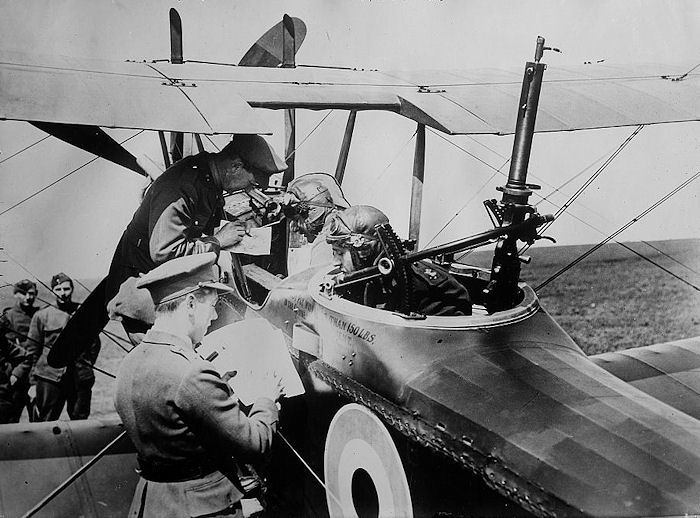
| Below: German aviators chat while ground crews look after their planes. From the beginning, German fighter pilots preferred patrolling the skies in hunter squadrons of at least 14 planes, unlike Allied pilots such as Navarre and others who preferred to fly solo. In the air, the German squadron formed a large multi-layered circle, spinning at the same rate while covering each other's tail. The whole group would then migrate together in one direction or another following the lead pilot. From the ground this sometimes resembled aerial entertainment. A circus-like caravan of support vehicles was also used to relocate the squadron from one sector to another as needed. Hence the name Flying Circus was coined to describe the German squadron. In the face of heavy losses, the Allies adopted the squadron method, realizing that a single fighter plane stood little chance against a well-trained Flying Circus such as the one led by the Red Baron. |
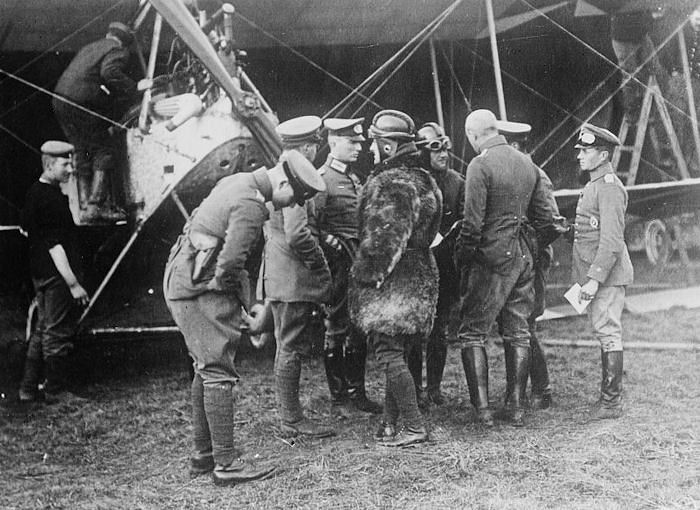
| Below Left: German aviator, Lt. Max Immelmann. He originated an effective looping maneuver which involved diving under his intended target followed by a vertical climb, an abrupt turn, and steep dive on the enemy's tail with machine-gun blazing. By age 25, he had become a world-famous Ace and eventually shot down 15 planes using his Fokker monoplane. But on the evening of June 21, 1916, he plunged 6,000 feet to his death, taken out by Lt. G.R. McCubbin of the Royal Flying Corps, who later became Britain's leading Ace. Below Right: The Red Baron--one of the most famous personalities in the war--actually a shy, quiet man praised as "a valiant and worthy foe" by the British. He wears the Pour le Mérite or Blue Max, Germany's highest award for valor. His career began in earnest over Verdun in 1916, where he had his first kill, followed by 79 more through April 1918. On his last flight, Captain Von Richthofen became separated from his squadron during a relentless pursuit of a single British plane. He flew low enough for British ground troops to take aim, along with a second British plane that had roared after him. Shot through the heart behind British lines, he was given a full field burial with British flyers acting as pall bearers. |
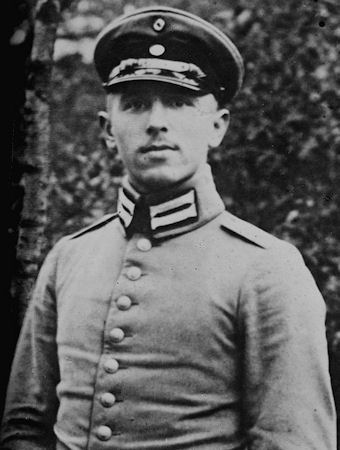
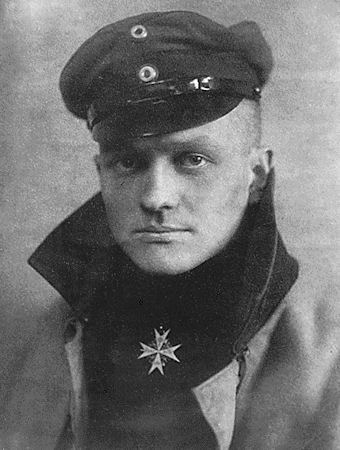
| Below: A downed French plane that crashed into a farm house. In addition to the risk of being shot down by an enemy fighter plane, combat flyers also risked being shot out of the sky by newly developed anti-aircraft units using machine-guns and time-delayed artillery. Planes also malfunctioned amid the strains of combat flying as pilots pushed the limits of the airframe and engine to gain a tactical edge--risking catastrophic failure. Ultimately, more pilots died in accidents during the war than were killed in aerial combat. |
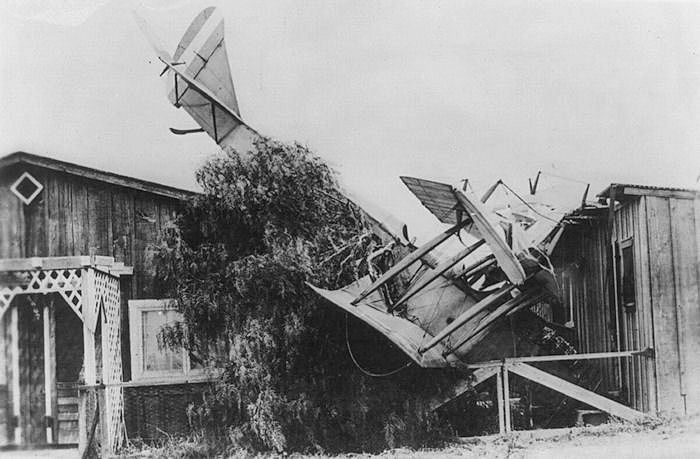
| Below: American volunteer flyers, fighting for France in the special Franco-American Flying Corps called the Lafayette Escadrille. On the far right is Victor Chapman, age 27, the first American flyer killed in the war. On June 24, 1916, he came to the rescue of fellow American Norman Prince, seen third from the left, who was under attack from five German planes over Verdun. But Chapman was attacked simultaneously from the front and rear by two German planes and was killed mid-air. As his plane fell to the ground the Germans continued firing until both wings were shot off. Prior to his death, Chapman had been shot down seven times and was credited with shooting down four German planes. |
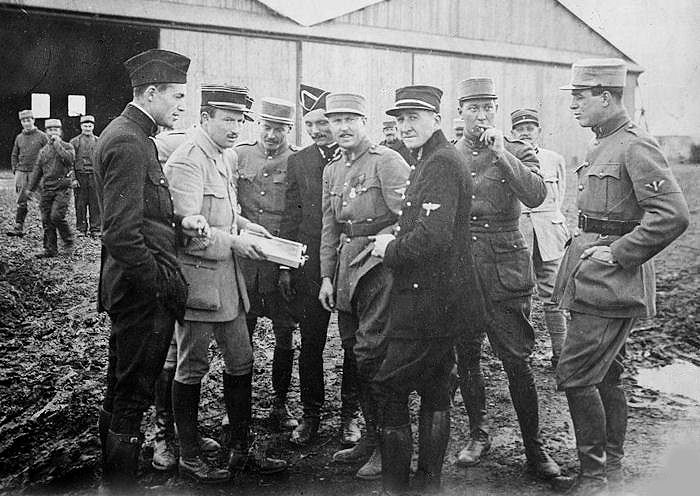
| Below Left: British Daily Chronicle newspaper poster concerning the Zeppelin bombing raids on London. Below Right: British flyer Lt. Reginald A.J. Warneford who gained worldwide fame by downing the first Zeppelin over Belgium on June 7, 1915. He was killed ten days later in a non-combat flight mishap while giving a ride to American writer Henry Beach Needham, also killed, who had asked to experience flying over Paris. |
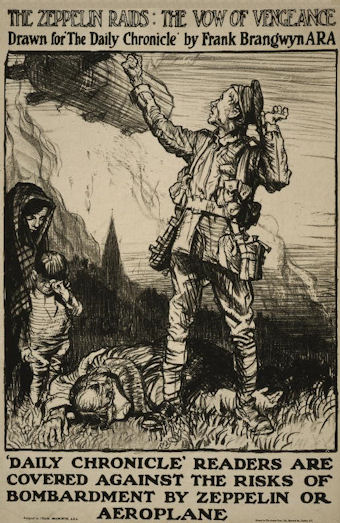
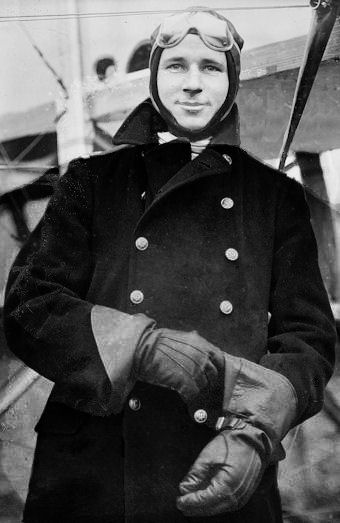
Return to World War I Timeline - 1916
The History Place - World War I Index Page
The History Place Main Index Page
Copyright © 2009 The History Place™ All Rights Reserved
Terms of use: Private home/school non-commercial, non-Internet re-usage only is allowed of any text, graphics, photos, audio clips, other electronic files or materials from The History Place.